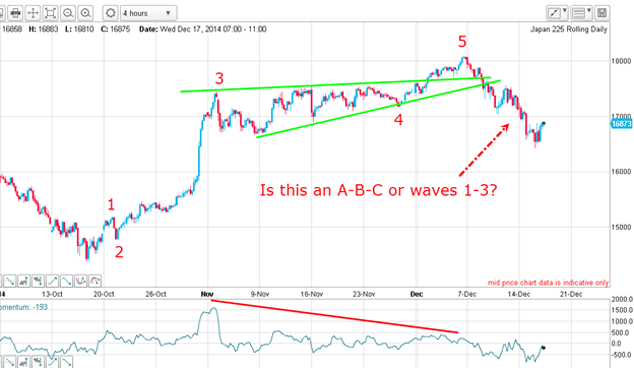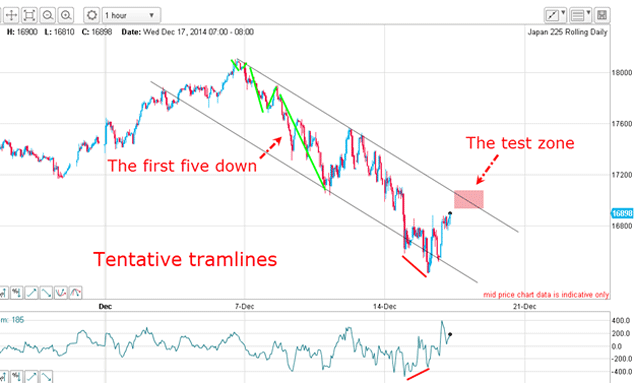Social mood and the markets: It’s getting ugly
Learning to how to judge social mood can tell you a lot about which way the market is heading, says John C Burford.
I don't often comment on the general news, but the following report from Germany made my blood go cold and is an omen for a very disturbed 2015, socially and in the markets.
As you know, I believe markets are driven by the prevailing social mood. If this mood is generally positive as it has been since the credit crunch markets will rise and risk will be embraced.
There are various surveys of investor/trader/advisor sentiment, especially from the USA, and these follow the general social mood. This is a founding principle of socionomics. As you know, I use these types of readings when directing my trading.
MoneyWeek
Subscribe to MoneyWeek today and get your first six magazine issues absolutely FREE

Sign up to Money Morning
Don't miss the latest investment and personal finances news, market analysis, plus money-saving tips with our free twice-daily newsletter
Don't miss the latest investment and personal finances news, market analysis, plus money-saving tips with our free twice-daily newsletter
But outside of the markets, there are marked characteristics of society that define a prevailing social mood and I advise all my readers to keep your finger on the pulse of these changes. If you can judge this mood correctly, you have every chance of being on the right side of your trades.
The change in social mood is sweeping the globe
But when social mood turns negative and bearish for the future, groups split into opposing factions and social unrest erupts. In extreme cases, nations engage in war.
What is happening in Germany is a mirror on the abrupt change in social mood that is sweeping the globe.
Briefly, a grassroots movement called Pegida was started in Dresden in October to demonstrate against what the members see as the 'Islamisation of Germany'. It attracted a few hundred protesters.
The rally this week attracted a lot more over 10,000 and the story made the international press. Heavily armed riot police were called and the country's leading politicians were forced to condemn the movement. With that, it now has credibility. And these demonstrations have spread to other German cities.
But what this sudden eruption of anger over immigration has done is highlight the swift turn in social mood that has occurred. Immigration in Europe wasn't a major problem in the bull market, but now it is. German society (and that of other European nations) is splitting and this is a very bearish sign.
It is omens like these that can point you towards correct market positioning.
What will happen in 2015?
This implies that social mood will turn a lot more negative in 2015.
We are already seeing signs of severe distress in the debt markets with the first-in-line junk bond index AKAmy plunge-ometer down sharply off its highs.
Much of this weakness comes from companies in the shale oil patch, whose bonds are unable to withstand low oil prices without buckling. Some of these bonds are currently trading under 50cents on the dollar. That is one haircut!
One by one the dominos will fall and even the safe-haven Treasuries will join in. Yields here are ultra-low, but the long trade is very crowded the latest AAII survey of money managers shows bulls at a near-record 95%.
The last time it was this elevated was in October, just before a huge rise in yields and drop in prices. When this bubble pops, it will be a doozy.
Incidentally, in my last Trader postof the year next Monday, I will set out my 'Trades for 2015'. This has become an annual event for me and my record has been excellent so far.
Last year, one of my Trades for 2014 was to buy Alcoa, the US aluminium producer. It rose from $8 to this year's high at over $17.
The other one was to go long the US dollar a very contrary stance at the time. We know how that is turning out.
Make sure you tune in next Monday for next year's selections.
Has the Nikkei turned?
Trade for Profit Academy
Most people are bullish on Japanese shares, but this chart should give them pause:

The rally off the October low is a rather unconventional though correctly labelled motive five-wave pattern, complete with a massive negative-momentum divergence, heralding a sharp move down (which has occurred).
Note the lovely rising wedge for wave 4. The final thrust in wave 5 topped the pattern and when the market came back inside the wedge, that was a clear signal the trend had changed. A break of the lower wedge line confirmed that prognosis and was an ideal place to enter short trades.
But now there is a clear three waves down so far, and the jury is out whether it is a three-wave counter-trend move or waves 1-3 of a large five down. If it is an A-B-C, that implies a move to new highs. If it turns out to be a five down, then the down move will intensify.
Here is a close-up of the move down:

I have drawn in my tentative tramlines and the first move down is a clear five down, which is one of the signs that tell me the trend has likely changed. There is a small positive-momentum divergence at the lows which is leading to the current rally.
Note the form of this rally it is an A-B-C, suggesting it is counter-trend.
If the market can rally to the upper tramline in the pink zone, that will be the moment of truth.
Get the latest financial news, insights and expert analysis from our award-winning MoneyWeek team, to help you understand what really matters when it comes to your finances.
John is is a British-born lapsed PhD physicist, who previously worked for Nasa on the Mars exploration team. He is a former commodity trading advisor with the US Commodities Futures Trading Commission, and worked in a boutique futures house in California in the 1980s.
He was a partner in one of the first futures newsletter advisory services, based in Washington DC, specialising in pork bellies and currencies. John is primarily a chart-reading trader, having cut his trading teeth in the days before PCs.
As well as his work in the financial world, he has launched, run and sold several 'real' businesses producing 'real' products.
-
 What are my retirement income options?
What are my retirement income options?We’re all told to save into a pension, but there’s widespread confusion about how to take an income from our savings and investments at retirement, a new study has found. We look at your retirement income options.
-
 UK interest rates: will the Bank of England lower rates?
UK interest rates: will the Bank of England lower rates?The Bank of England’s Monetary Policy Committee’s (MPC) final interest rates meeting of the year takes place tomorrow (18 December) and most experts expect a cut